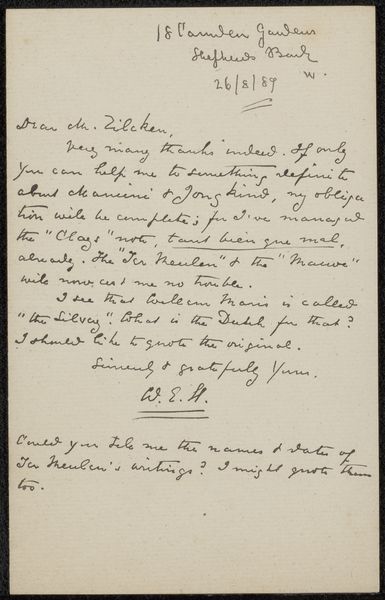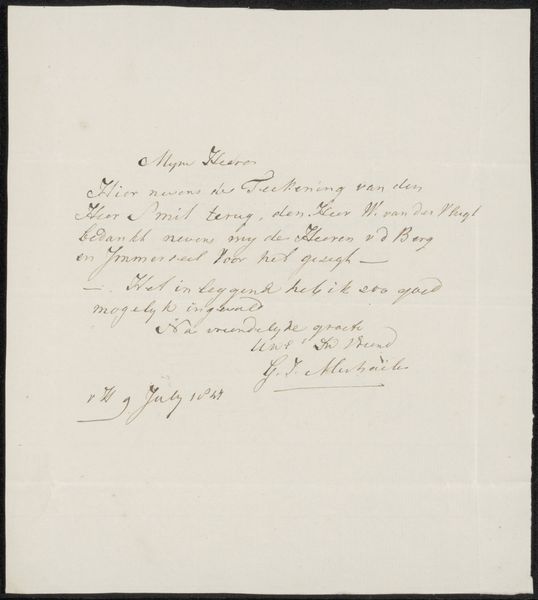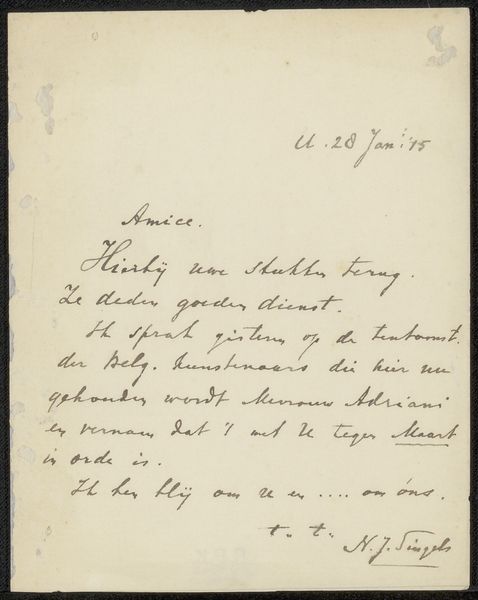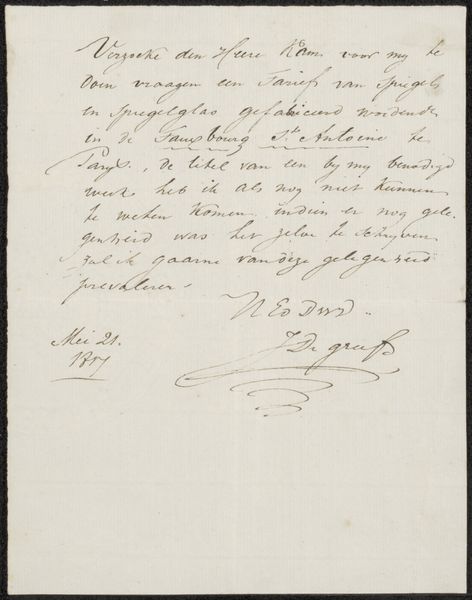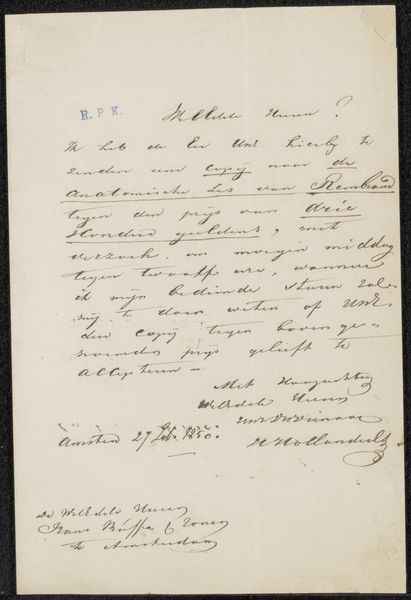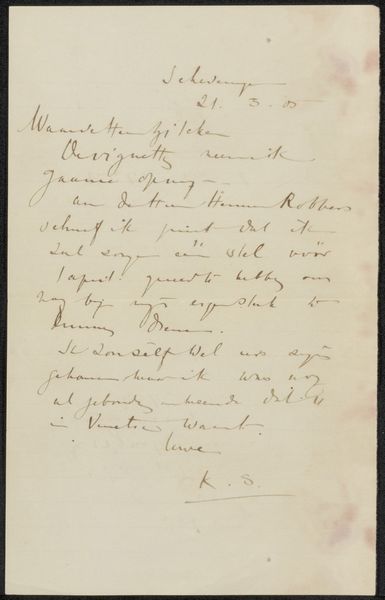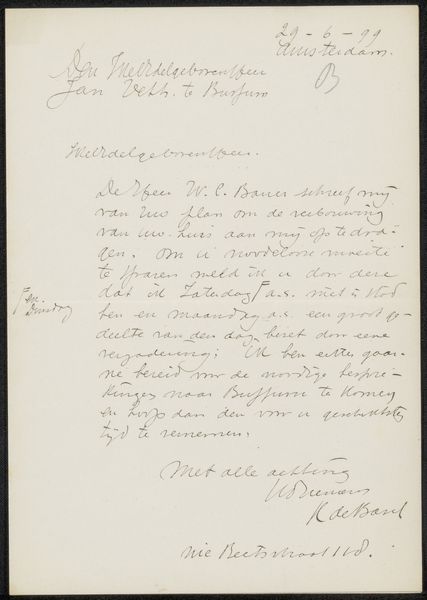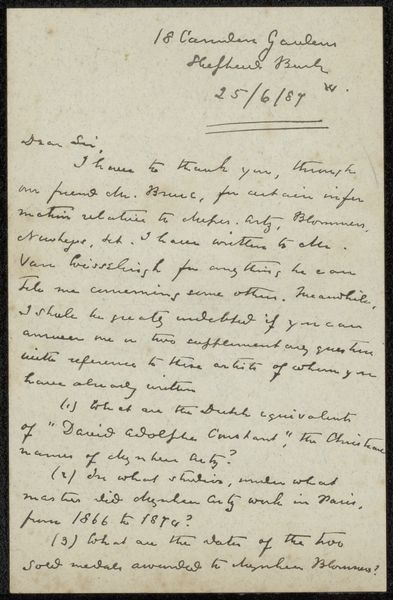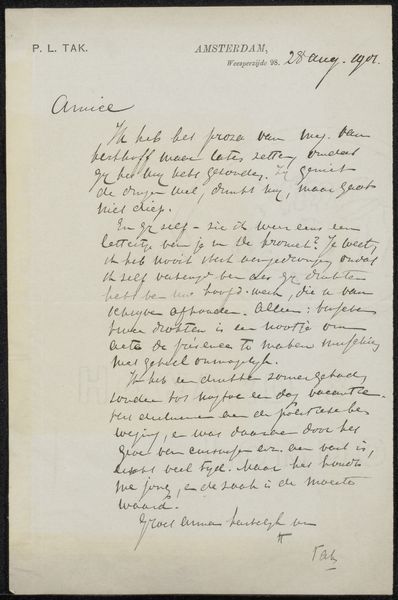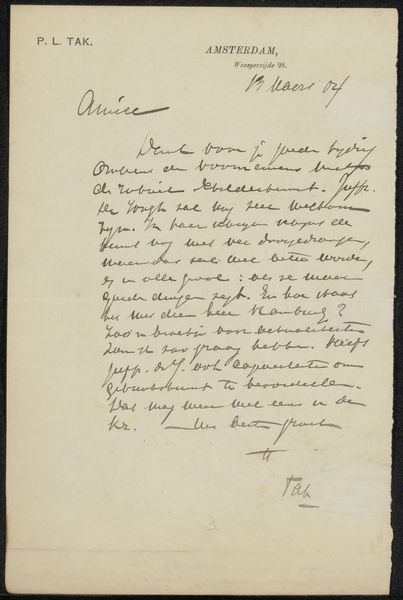
Aantekening betreffende een ets van Jan Lievens 1828 - 1910
0:00
0:00
drawing, textile, paper, ink, pen
#
drawing
#
textile
#
paper
#
ink
#
pen
Copyright: Rijks Museum: Open Domain
Editor: So, this piece is called "Aantekening betreffende een ets van Jan Lievens" – quite a mouthful! – and it's attributed to Sir Francis Seymour Haden, created sometime between 1828 and 1910. It looks like pen and ink on paper, almost like a page torn from a journal. The handwriting gives it a real sense of intimacy. It’s kind of puzzling, actually. What do you make of it? Curator: Ah, a wonderful puzzle, isn't it? To me, this isn’t just ink on paper; it's a portal into a conversation across centuries. Haden, a surgeon turned etcher, was deeply invested in the history of printmaking, almost fanatically so, and especially in the work of Rembrandt and his circle. He’s not just making notes; he's actively wrestling with the authenticity and attribution of a print by Jan Lievens, a contemporary of Rembrandt. You see how he questions the originality, mentions a possible reworking by Rembrandt himself? Editor: Yes, I see that. He mentions "reworking by Rembrandt," so is he suggesting that this supposed Lievens piece might have actually been touched up or even partially created by Rembrandt? Curator: Precisely! It's art historical detective work, fuelled by Haden’s intense passion and his own artistic ego, perhaps. He even comments on the quality of the print – "looks as if it were in ink.” He’s debating with himself, and with us, across time, about authorship, originality, and the very nature of artistic influence. Don't you think there’s something deeply poetic about that? Editor: Absolutely. I didn’t realize there was so much going on, just in a page of handwriting! It’s like peeking over the artist’s shoulder as he thinks. Curator: Exactly! It reminds us that art history is rarely settled. It's an ongoing process of questioning, re-evaluating, and seeing with fresh eyes. That's the thrill of it all. Editor: That’s a good way to put it; I’ll remember that!
Comments
No comments
Be the first to comment and join the conversation on the ultimate creative platform.
